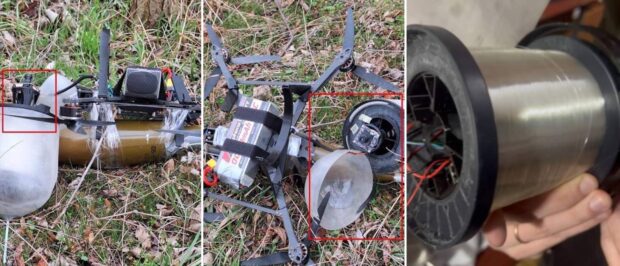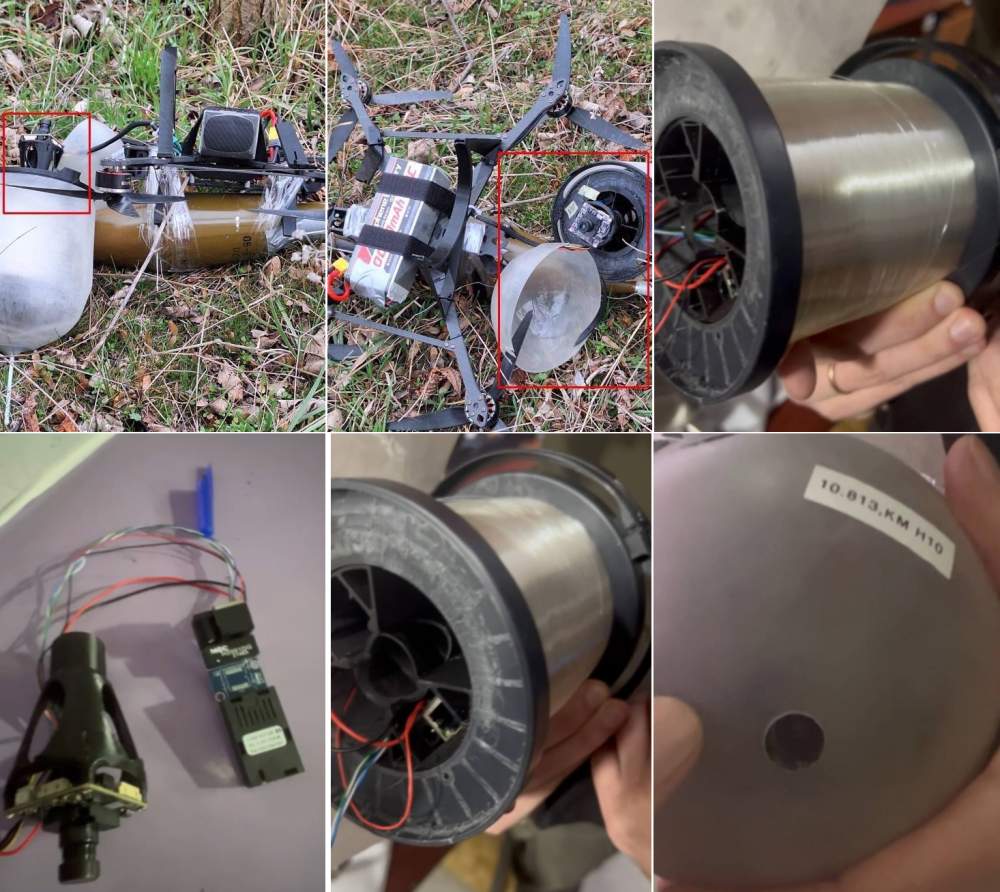The invasion forces of Russia have started using FPV drones controlled via fiber optic wires. This way of signal exchange makes the UAVs completely invulnerable to any electronic warfare systems as they operate without reliance on radio communication.
The emergence of these drones came to light through a report by Serhii ‘Flash‘, an expert at military communication and EW, he also published photographic evidence of the device on his social media. Equipped with a 10 km long fiber optic spool, the drone unwinds the cable while navigating through the air, maintaining communication with its operator.
The drone was handed over to the“Birds of Magyar” unit’s specialists for further study.
“We saw something we had never seen before. A Russian FPV drone was flying toward a target with a 10-kilometer-long coil of thin fiber optic cable. The cable was unwound in the air. We see a new technology for controlling FPV drones,” Serhii Flesh shared.
The use of wired communication in drone control offers an important advantage, as such a drone becomes invulnerable to its own and enemy electronic warfare.
Due to the wire, the drone operator will have a constant, uninterrupted video signal in high quality, which will significantly increase the strike’s accuracy and effectiveness.
In addition, the operator’s “radio horizon” phenomenon disappears, due to which the connection is lost during diving in the last meters of the flight.
It is not yet clear at what stage Russia’s development of drones of this type is, but the fact remains that their first prototypes have been introduced on the front lines.
Serhii Flesh noted that such a solution was also proposed as part of the January hackathon of the Ministry of Defense, which presented promising developments in the field of unmanned systems. However, this idea was not supported at the time due to the high risk of fragile fiber optics breaking during the flight.
Wired control
In the field of unmanned aerial systems, wire control may seem like something exotic. Still, it has long been used in a similar way to control missiles of anti-tank systems, both of old Soviet and modern fourth-generation models.
For example, the Spike LR2 guided missile from Israeli arms maker Rafael drags a fiber optic spool, unwinding it for up to 5.5 km.
In particular, the Israeli Spike-ER anti-tank missile system, which is widespread in the world, is capable of hitting targets at a distance of up to 10 kilometers using fiber optic wire for communication.
Serhii Flash urged Ukrainian specialists to explore the feasibility of integrating this technology into their own drone development. He also noted that such proposals were made in the past, during the dedicated Hackathon event organized by the Ministry of Defense of Ukraine, but rejected because the military doubted the wire wouldn’t break while being pulled for ten kilometers straight.
Source: MILITARNYI;


